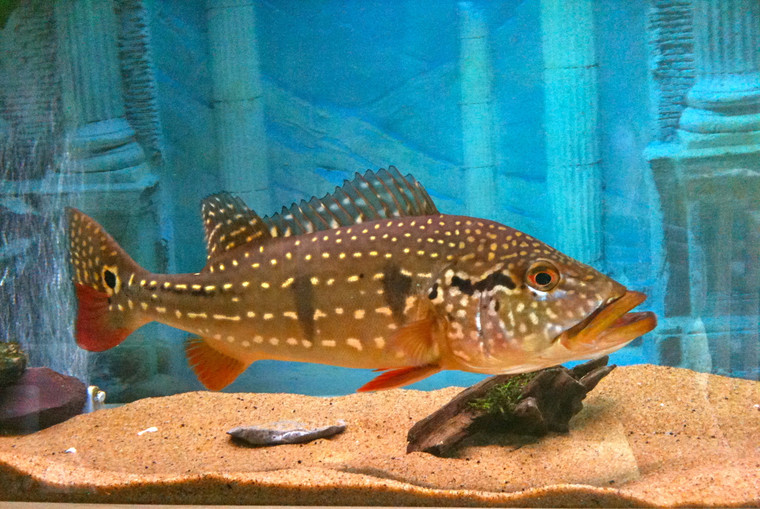C. temensis, in its bright spawning color phase (above right) is called "assu" in Brazil or "3-bar" in English. They become heavier and deeper bodied in this form due to pre-spawn changes and matured gonads. Color and Pattern: Cichla temensis identification is made somewhat complex by the species' morphological variability. Specimens are encountered in two very distinct color and pattern phases, with an array of intermediate stages corresponding to their degree of reproductive readiness. The spawning pattern transformation process is gradual - the bars darken, colors brighten and the white speckles disappear. The brilliantly colored acu (pronounced 'assu') is in reproductively active condition and is shown at the top, above. The Paca morph (second from top photo) has white or yellow dots (3) arranged in four distinct longitudinal rows. Both morphs have 3 distinct dark bars (2)along the sides of the body and a distinct black stripe or speckled markings from the eye to the end of the opercular bone (cheek or gill cover) (1), no ocelli on the sides or at the base of the second dorsal. Body shape and characteristics: Temensis is the most elongate of the Cichla species, with a body depth generally around 25% of its standard length (length measured to the base of the tail). It has the smallest relative scale size of the genus, generally having from 100 to 125 scales along its lateral line.

